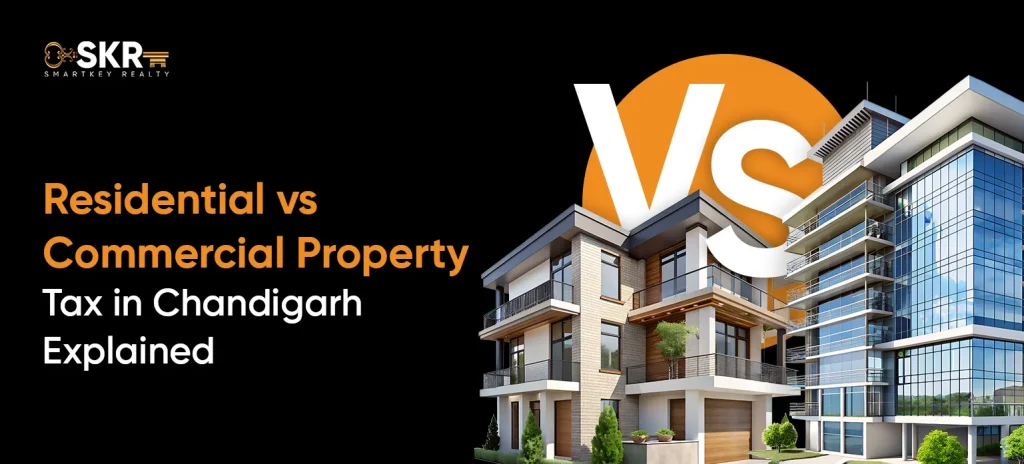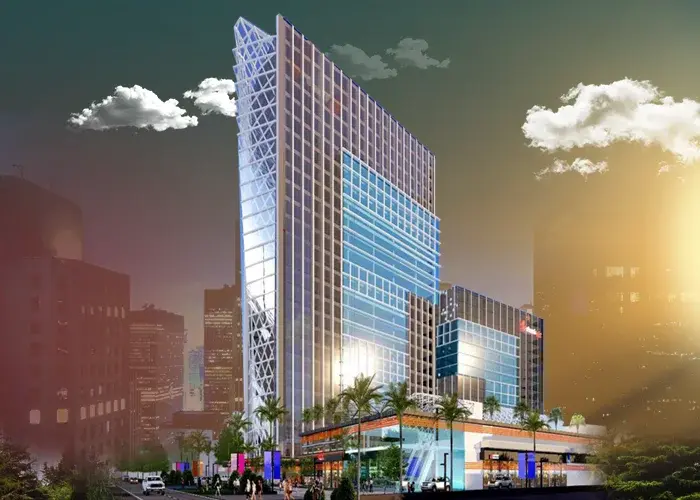
Everyone talks about property prices in Chandigarh. Almost no one mentions the tax trap waiting on the other side of the deal. Here’s what catches most buyers off guard: commercial spaces in Chandigarh pay nearly double the property tax compared to residential units. Same square footage. Same sector. Completely different tax bills.
This gap between residential and commercial property taxes directly impacts investment returns. Missing this detail during purchase means budget miscalculations that show up every single year.
This blog breaks down how Chandigarh Municipal Corporation calculates taxes for both property types, what owners actually pay, and how these numbers affect investment decisions.
The Tax Calculation System
Chandigarh Municipal Corporation works with the Annual Ratable Value (ARV). They estimate yearly rental potential, then slap on tax percentages based on property type.
Residential properties get charged less. Commercial properties pay more. The reason? Businesses earn from these spaces, so taxes go up accordingly.
What Residential Owners Pay
Residential property tax covers apartments, houses, flats – places where families live. Rates stay reasonable here.
MC checks four main things:
- Total built-up area
- Which sector does the property sit in
- Building age
- Construction type
Rates typically land between 5% to 8% of ARV. Owner-occupied homes get additional cuts.
Early payers grab 10% to 15% discounts. Pay before the deadline, save money. That’s how the property tax dues system rewards prompt payments.
Also Read: Residential Property in Mohali
Commercial Property Costs
Commercial property tax hits shops, offices, showrooms, warehouses, eateries, hotels – any business location. Rates jump significantly here.
The same ARV method applies. Different percentages, though. Commercial properties face 10% to 15% rates on ARV. Nearly double what homes pay.
Categories include:
- Market shops
- Office complexes
- Storage facilities
- Hospitality businesses
All these pay substantially more than residential units. Minor variations exist between categories, but all exceed home rates by huge margins.
Actual Tax Comparison
Consider two 1,000 sq ft properties in Sector 17. One residential apartment. One commercial office.
Residential apartment – ARV ₹2,40,000, tax rate 6%. Annual bill: ₹14,400.
Commercial office – ARV ₹2,40,000, tax rate 12%. Annual bill: ₹28,800.
Difference per year: ₹14,400. Over five years: ₹72,000. Over ten years: ₹1,44,000.
That’s real money walking out the door annually, just in taxes.
Mixed Property Situations
Ground-floor shops with upper-floor apartments are common in Chandigarh. These mixed-use properties are split into two tax calculations.
Shop portion – commercial rates apply. Apartment portion – residential rates apply. One combined bill arrives covering both.
Project developers must factor this in during the planning stages. Wrong estimates create budget holes that surface during operations.
Additional Factors
Larger properties automatically pay more. ARV rises with square footage; taxes follow.
Prime locations mean higher assessments. Sector 17 properties get valued differently from Sector 47 properties. Location premium translates to tax premium.
Building condition matters too. Well-kept properties can face higher valuations than rundown ones.
Actual usage must match approved usage. MC conducts surprise checks. Running a business from a residential property brings fines plus backdated commercial taxes. Running residence from commercial space does the same.
Discount Opportunities
Early payment cuts 10% to 15% off bills. Works for both property types. Just clear dues ahead of the deadline.
- Senior homeowners get reductions on residential property tax bills. Age proof plus ownership documents needed.
- Educational institutions and hospitals sometimes get exemptions. Needs government approval with proper documentation.
- Commercial spaces rarely qualify for exemptions. The government keeps these rates firm.
Payment Methods
The MC website handles all property tax payment transactions now. Cards work. Net banking works. Standing at counters doesn’t happen anymore.
Annual notices get sent out. But waiting for notices means missing early bird discounts. The payment window opens before notices arrive.
Late payments add penalties. Interest compounds monthly. Commercial properties with already fat bills see penalties balloon fast.
Investment Decision Impact
Property purchases in Chandigarh require a complete cost analysis. The property tax difference isn’t pocket change – it’s thousands annually.
Commercial rentals bring higher income streams. But higher taxes chip away at gross returns. Net calculations need both rent and tax figures.
Mixed developments need precise projections for each component. Residential portions subsidise the overall tax burden. Commercial portions inflate it. Balance matters.
Strategic Planning
Successful property investment needs upfront clarity on recurring costs. Rent numbers look attractive. Tax bills arrive annually, permanently.
Example: Commercial units fetching ₹50,000 monthly rent seem profitable. Add ₹30,000 extra annual tax versus the residential alternative. Suddenly, margins shrink. ROI calculations must include realistic tax burdens.
Some investors stick with residential for predictable, lower tax loads. Others chase commercials despite higher taxes for superior rental yields. Both approaches work. Both need accurate numbers.
Property Type Selection
Chandigarh offers opportunities across residential and commercial segments. Residential ownership enjoys favourable tax treatment – lower rates, more rebates. Commercial ownership costs more in taxes but generates stronger cash flows.
Success depends on entering deals with eyes open. Property tax obligations don’t stop. They recur annually and typically increase as property values appreciate.
Purchase decisions made without tax consideration often backfire. A property that looked profitable on paper starts bleeding cash when annual tax bills arrive. This happens more with commercial spaces where the tax impact is substantial.
Documentation Requirements
MC requires proper property documents for tax assessment. Sale deeds, building approvals, and occupancy certificates – all factor into classification.
Wrong classification causes problems. A commercial property mistakenly taxed as residential will face reassessment plus penalties once discovered. The opposite situation creates similar headaches.
Property transfers need immediate notification to the MC. New owners inherit tax obligations, including any arrears from previous owners. Due diligence during purchase must verify a cleared tax status.
Also Read: Commercial Property in Mohali
Market Reality Check
Chandigarh real estate prices already run high. Adding ongoing tax obligations to the purchase price gives a complete cost picture.
Budget-conscious investors compare the total cost of ownership across options. Purchase price plus annual taxes over the projected holding period reveals the true investment size.
Commercial properties in prime sectors carry premium prices and premium taxes.
Property investment success in Chandigarh comes down to knowing every cost element. Tax obligations form a permanent part of ownership expenses. Whether looking at apartments or commercial units, getting tax calculations right prevents nasty surprises down the road.
The SmartKey Realty helps investors navigate the Chandigarh property market with complete financial transparency.




